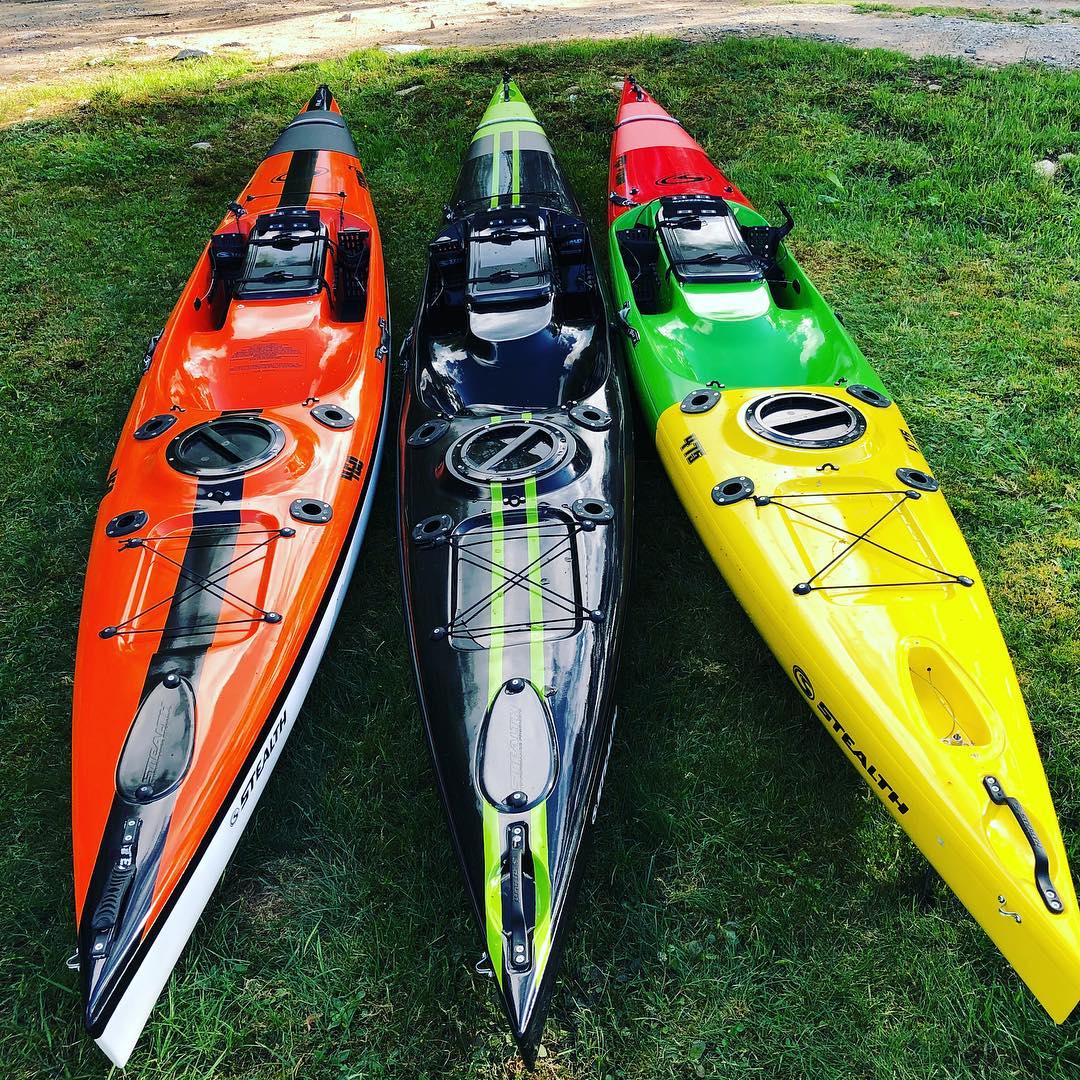
Choosing the right Kayak
It’s a question which I’ve seen and been asked many a time over the years, but unsurprisingly the answer is not straightforward. In my opinion, there is absolutely no such thing as a cover-all ‘best kayak’. That’s not to say that there aren’t bad kayaks out there though— some are poorly, cheaply and thoughtlessly constructed, paddle badly and degrade very quickly but once a high quality in layout, finish and seaworthiness is achieved, nothing is more important in the selection process than whether or not a particular kayak suits its paddler’s needs.
Us kayak fishers are all different people who do different things with different weights, heights, cars, launch spots, fishing styles and a myriad of other entirely individual subtleties which ultimately will be the determining factor on whether you end up paddling a kayak that does the job, or the perfect weapon which suits you to a tee. For example, if you’re like me and plan to fish offshore after launching through surf, one of the most basic needs is to choose a kayak that can fit fully rigged rods inside its hull. Kayaks without a central rod hatch can still be used to surf launch, but they’re not made with it in mind and it certainly shows in their ease of use in these situations.

When making your decision, it firstly helps to understand which kayaks are going to shine in the basic attributes of speed and stability while paddling them, as well as which you think you’re going to need when you go for a fish. To put things really, really simply, width makes a kayak more stable at the expense of a bit of speed, whereas length makes a kayak faster without any real negatives for on-water performance. Things get a little bit more complicated when we start talking about wetted surface area and hull shapes contributing to primary or secondary stability, or how they’ll handle in the surf, but more on that later.

The next really basic thing to consider is handling when your kayak is off the water. For most people who choose to fish from a kayak as opposed to a boat, one of the major drawcards is that they’re easy to store, set up and move around but some are definitely much easier than others. Shorter, lighter kayaks in our range like the profisha 475, fisha 460 or surf fisha 470 are– compared to some of the other near-6m beasts– absolute dreams to load on and off your car, store in your garage or carry down to the water. When you consider that all of these things are mandatory parts to every trip, it’s certainly important to make sure that you’re comfortable with the size and weight of your kayak on land as even though a bigger kayak can have some advantages in speed and/or stability once floating, it’s a major drawback if you’re struggling to lift it up onto a tall car roof every time you want to go for a paddle. Put simply, if it’s too much effort to go fishing then you won’t go fishing as much, so make sure whatever you choose is manageable for you.
Your own weight and height also play quite a major role in selecting your ride. If you’re well over 100kgs, a kayak like a profisha 475 which is rated to 95kgs isn’t likely to be ideal. Like any of the considerations in this article, that’s not to say that it won’t be possible for you to use a smaller kayak, but it in this instance for example it will feel a little bit less stable and a bit more cramped than it should. On the flipside, smaller paddlers have the luxury of being able to fit into smaller kayaks which are easier to manage but usually don’t have many issues in upsizing. It’s quite possible for someone with a small frame to enjoy the ride of a bigger yak more, although it’s safe to say that most guys will tend to stick with skis that suit them where possible.

As for surf transits, I’ve gone through how different kayaks handle in a little bit more detail here, but in summary shorter kayaks with more rocker and/or volume in the nose like a surf fisha 470 or profisha 475 will be much more manoeuvrable, more fun in the surf and better at catching and riding waves. Longer, flatter kayaks like a profisha 575 on the other hand require a different approach to the surf zone, relying on speed to avoid waves by staying well in front of or well behind the break lines. I personally think that capability in the surf is one of the big hidden advantages in smaller boats like the 475, 460 or 470 and for guys that want to launch on open beaches and have a bit more fun in the waves, these are fantastic options.
It’s also worth talking a bit about materials. Composite kayaks are ideal for any offshore work as they tend to be light, strong and glide over water extremely smoothly. Fibreglass is the most common as it’s cost-effective, lightweight and very easily repairable. They’re not easy to break, contrary to the beliefs of some, and can handle quite a few good knocks before needing any attention. Epoxy-based constructions in particular like in all of Stealth’s current range are very light which is great for off-water handling as mentioned above. Carbon fibre and carbon kevlar skis are pricier, but they also tend to be ever so slightly lighter and stiffer than their fibreglass brethren which, if your budget can stretch, makes them pretty awesome weapons. Their only drawback is a touch more brittleness, but they’re certainly not so fragile as to need any more babying than the usual basic care steps of… well, not dropping them off the roof of your car!!!
Plastic kayaks on the other hand are far more durable than composites, but they’re far heavier and don’t have the same glide over water. If your requirements include being able to drag your craft over rocks, drop it, scratch it and generally treat it poorly then plastic options are certainly worth looking into, but they can’t quite replace a purpose-built fibreglass fishing ski for surf launches and long paddle distances offshore.

Ultimately, there’s no one kayak to suit every person so it’s all in the options. Hopefully this has given you a bit to think about if you’re in the market for something to get you out beyond the shoreline! Even though some people might go around touting their kayak as ‘the best’, in truth nothing is more important for getting the most out of your purchase than whether your kayak suits you individually.
Tight lines, screaming drags and happy paddling,
Owen Gray
____________________________________________________
